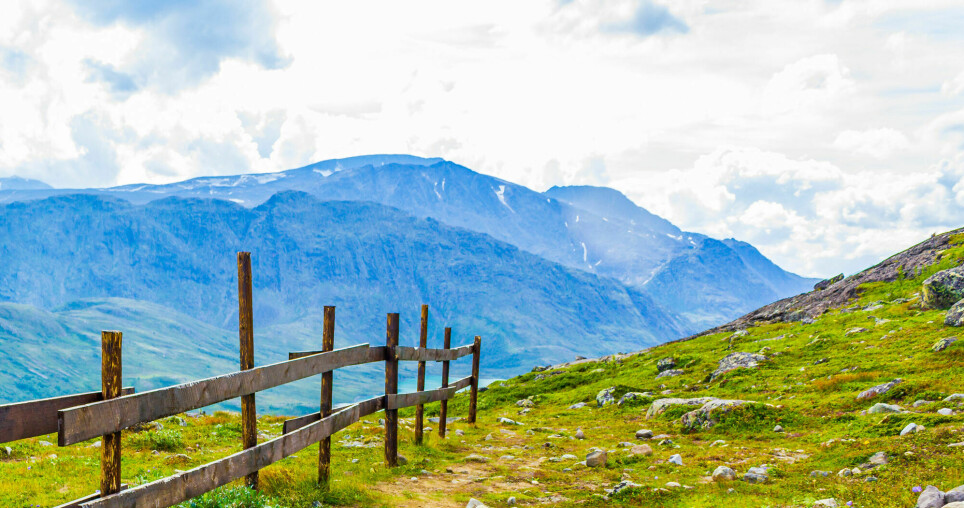
The summer of 2020 lured out many first-time hikers
Fewer and fewer Norwegians are interested in hiking off the marked mountain trails, according to researchers from the Norwegian Institute for Nature Research.
The number of Norwegians hiking in the mountains increased sharply in 2020, according to the Norwegian Institute for Nature Research (NINA).
A lot of speculation preceded their recent survey, and some people projected that the mountains would be practically overrun by tourists.
In an article in UTMARK – tidsskrift for utmarksforskning, the researchers shed light on how the first pandemic summer in the mountains actually turned out.
Hiking was a popular first-time activity
To form a picture, researchers looked at who and how many tourists visited the mountains Besseggen in Jotunheimen and Falkeriset in Rauland south of the Hardangervidda.
Hiking in the mountains was the activity that the most people reported doing for the first time in 2020.
NINA’s data is taken from a survey conducted by Norsk Friluftsliv (The Norwegian Association for Outdoor Organisations) and the market research company Ipsos. The numbers were based on a representative sample of the Norwegian population over the age of 18.
Fewer people than expected
In 2020, forskning.no reported on the ground from Besseggen (in Norwegian).
According to one survey, 170 000 Norwegians had plans to go to Besseggen. But the actual mood of the people showed quite a different picture.
“There are hardly any people here! The propaganda of fear reporting that the mountains are full of people doesn’t match reality,” said host Marius Haugaløkken at the Gjendesheim tourist hut.
Decline in foreign tourists – as expected
In the NINA article, the authors were particularly interested in how people’s hiking habits and expectations in the mountains were changing.
Both Besseggen and Falkerisen experienced a large decrease in the number of foreign tourists compared to previous years.
However, the total number of tourists varied greatly between the two locations. The number of tourists visiting Besseggen declined by about 28 percent. At Falkeriset it was the opposite, with a 32 percent increase in the number of visitors.
Both of the tourist attractions showed an increase in the number of Norwegians, even though many foreign tourists were absent.
Besseggen was harder hit since its foreign tourists typically number almost twice as many as come to Falkeriset.
New hiking patterns
The researchers note that Norwegians used nature in a different way in the summer of 2020 and point to the COVID-19 restrictions as the reason.
Overall, the visitors travelled in larger groups, more tourists were first-time visitors, more were beginning hikers and many wanted to seek out tourist attractions.
The larger groups might have been related to more people staying at mountain cabins with their family and friends, say the researchers.
Norwegians stick to the trails
The researchers wondered whether more first-timers were influencing mountain tourism. In the article, they point out that the majority of Norwegian tourists keep to the marked trails when they hike.
The number of trail hikers increased from 81 percent in 2017 to 88 percent in 2020 at Falkeriset. At Besseggen, almost everyone walked along the marked trails.
The researchers also write that Norwegians seek other things in nature than they did a few decades ago.
The interest in trails that include attractions along the way has grown. Fewer people seek out wild areas without well-trodden paths.
Translated by Ingrid Nuse.
Read the Norwegian version of this article on forskning.no.
Reference:
Selvaag, Sofie Kjendlie., Wold, Line Camilla., Gundersen, Vegard., Keller, Rose., Vistad, Odd Inge (2021). Domestic travel in times of crisis – What happened at nature attractions during the covid-summer of 2020? UTMARK – tidsskrift for utmarksforskning.






























